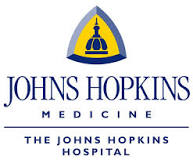Per Oral Endoscopic Myotomy (POEM) for Esophagogastric Junction Outflow Obstruction (EGOO)
| Status: | Recruiting |
|---|---|
| Healthy: | No |
| Age Range: | 18 - 70 |
| Updated: | 1/31/2019 |
| Start Date: | July 2015 |
| End Date: | June 2019 |
| Contact: | Mouen A Khashab, MD |
| Email: | mkhasha1@jhmi.edu |
| Phone: | 443-287-1960 |
This research is being done to study an endoscopic procedure called "POEM" as a less invasive
alternative to surgery in people with esophagogastric junction outlet obstruction (EGOO).
alternative to surgery in people with esophagogastric junction outlet obstruction (EGOO).
Patients with EGOO have difficulty swallowing and/or chest pain. Previously we were not able
to distinguish this disease from achalasia. Achalasia is a disease which is characterized by
a progressive difficulty with swallowing. It is caused by failure of relaxation of the lower
esophageal sphincter (sphincter between esophagus and stomach) along with an essentially
aperistaltic esophageal body.
However, EGOO patients have abnormal lower esophageal sphincter relaxation with some
preserved peristaltic activity. Because they have some peristalsis, these patients are not
diagnosed with achalasia.
Currently, a new diagnostic method, known as high-resolution manometry (HRM), can identify
EGOO patients. EGOO patients usually do not respond well to medical treatment and surgery is
required in most cases to reduce the pressure of lower esophageal sphincter muscles. This
procedure is called "Heller myotomy".
Recently, a new endoscopic method for reducing lower esophageal sphincter pressure has been
developed. This method, per-oral endoscopic myotomy (POEM) is now being performed clinically
throughout the world, including Johns Hopkins Hospital. The technique utilizes a flexible
endoscope to tunnel beneath the esophageal surface layer and cutting muscle fibers of the
lower esophagus and upper stomach. POEM is an alternative to invasive surgery with fewer
complications. POEM is performed safely at Johns Hopkins Hospital for achalasia patients.
Outcomes of POEM have been excellent with greater than 90% positively responding to
endoscopic myotomy. Patients with EGOO are being diagnosed more often due to increased use of
HRM. They respond poorly to endoscopic therapies but well to surgical myotomy. POEM is the
endoscopic equivalent to surgical intervention and represents a less invasive approach to
treating these patients.
to distinguish this disease from achalasia. Achalasia is a disease which is characterized by
a progressive difficulty with swallowing. It is caused by failure of relaxation of the lower
esophageal sphincter (sphincter between esophagus and stomach) along with an essentially
aperistaltic esophageal body.
However, EGOO patients have abnormal lower esophageal sphincter relaxation with some
preserved peristaltic activity. Because they have some peristalsis, these patients are not
diagnosed with achalasia.
Currently, a new diagnostic method, known as high-resolution manometry (HRM), can identify
EGOO patients. EGOO patients usually do not respond well to medical treatment and surgery is
required in most cases to reduce the pressure of lower esophageal sphincter muscles. This
procedure is called "Heller myotomy".
Recently, a new endoscopic method for reducing lower esophageal sphincter pressure has been
developed. This method, per-oral endoscopic myotomy (POEM) is now being performed clinically
throughout the world, including Johns Hopkins Hospital. The technique utilizes a flexible
endoscope to tunnel beneath the esophageal surface layer and cutting muscle fibers of the
lower esophagus and upper stomach. POEM is an alternative to invasive surgery with fewer
complications. POEM is performed safely at Johns Hopkins Hospital for achalasia patients.
Outcomes of POEM have been excellent with greater than 90% positively responding to
endoscopic myotomy. Patients with EGOO are being diagnosed more often due to increased use of
HRM. They respond poorly to endoscopic therapies but well to surgical myotomy. POEM is the
endoscopic equivalent to surgical intervention and represents a less invasive approach to
treating these patients.
Inclusion Criteria:
1. Consecutive adult patients (18-70 years of age) with symptomatic dysphagia (dysphagia
score ≥2) EGOO that is diagnosed by high resolution manometry.
2. Ability to give informed consent.
Exclusion Criteria:
1. Unable to give informed consent
2. Pregnant or breastfeeding women (all female patients if child-bearing age will undergo
urine pregnancy testing prior to endoscopy)
3. Acute gastrointestinal bleeding
4. Coagulopathy defined by prothrombin time < 50% of control; partial thromboplastin time
(PTT) > 50 sec, or international normalized ratio (INR) > 1.5), on chronic
anticoagulation, or platelet count <75,000
5. Inability to tolerate sedated upper endoscopy due to cardio-pulmonary instability or
other contraindication to endoscopy
6. Prior esophageal or gastric surgeries
7. Cirrhosis with portal hypertension, varices, and/or ascites
8. Active Esophagitis
9. Hiatal hernia larger than 2cm
10. Barrett's esophagus
11. Eosinophilic esophagitis
12. Esophageal stricture
13. Esophageal malignancy
14. Large esophageal diverticulum
15. Mechanical obstruction to esophageal outflow or infiltrative esophageal or gastric
disorders.
16. Prior esophageal Botox injection
We found this trial at
2
sites
1800 Orleans St.
Baltimore, Maryland 21287
Baltimore, Maryland 21287
410-955-5000

Principal Investigator: Mouen Khashab, MD
Phone: 667-214-3182
Johns Hopkins Hospital Patients are the focus of everything we do at The Johns Hopkins...
Click here to add this to my saved trials
Johns Hopkins Hospital Patients are the focus of everything we do at The Johns Hopkins...
Click here to add this to my saved trials